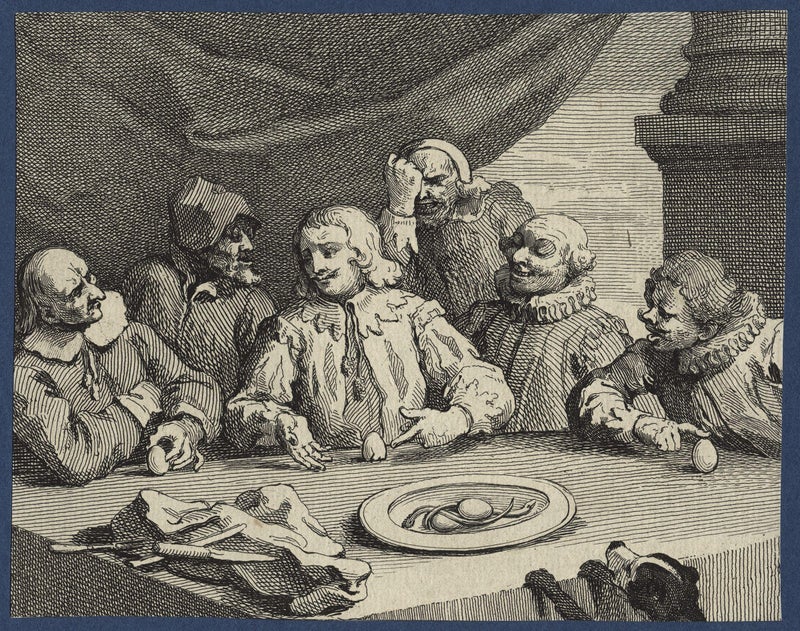IMPROMPTUS Mexico City Journal, Part II
Read more at: http://www.nationalreview.com/article/456167/families-music-and-bacon-mousse-mexico-city-journal-part-ii
Read more at: http://www.nationalreview.com/article/456167/families-music-and-bacon-mousse-mexico-city-journal-part-ii
otes on a southern capital Editor’s Note: This journal began yesterday, here. It will conclude today. He is a fierce-lookin’ hombre, with a poetic name: José María Morelos y Pavón. In his right hand is a sword (shortish but surely deadly). His dates are 1765 to 1815. He was a priest and a rebel — a revolutionary leader. Here, he is called “Servant of the Nation.” That is a high designation. I’m looking at a statue, just below Chapultepec Castle. The castle is high on a hill, and, when up high, you notice something: Mexico City is surrounded by mountains. The castle houses the National Museum of History. It is a fine museum. But the real treat is the building — the castle. Its porticos, its arches, its stained-glass windows, its gardens, its tiles. Its general beauty and grace. x Can you imagine living here? Have a peek: 1-IMG_4680.jpg Have another peek: 2-IMG_4674.jpg The signs in the museum are untranslated. They are Spanish-only. I find this in restaurants too, and elsewhere. Interesting. All over the world, bored children in museums have the same look, don’t they? The guards here are bored too, scoping out the women, brazenly. Outdoors, there are bird-watchers, rushing to trees with their binocs, looking up, seeing what’s what. Once, in Guatemala, I said, “Everything grows here. It’s hard to imagine the thing — the plant, the flower, the fruit — that doesn’t grow here. It’s like the whole country is coated with Miracle-Gro.” I have a similar impression of Mexico City. The Bosque de Chapultepec is an immense park, almost 1,700 acres. It’s like Central Park in New York, with this difference: Chapultepec is lousy with commerce, whereas there is very little in Central Park — just a few scattered food carts. In Chapultepec, you have stand after stand after stand, with their hawks. The sounds from the zoo are kind of thrilling — wild. The squirrels seem utterly oblivious. They’ve heard it all … One female guard is going off to get some food, and she asks another female guard whether she wants anything — calling her “compañera.” I find this somewhat touching. I see by the signs outside the Auditorio Nacional that operas from the Met in New York are broadcast here. You sit and watch them on a big screen. I also notice the Spanish form of “Cinderella”: “La Cenicienta.” In Italian, it’s “Cenerentola” (as in the Rossini opera), and in French it’s “Cendrillon” (as in the Massenet). I also see, outside the Auditorio Nacional, that the Vienna Philharmonic will be here, under the baton of Gustavo Dudamel. There is a big, big picture of the Philharmonic — and I recognize many of them, after years of working at the Salzburg Festival. Dudamel is the music director of the Los Angeles Philharmonic and a Venezuelan. He is a big star in Latin America, as elsewhere, of course. (The Vienna orchestra and Dudamel will appear in Carnegie Hall in a couple of weeks.) Mexico City features an Avenida Presidente Masaryk — an avenue named for Tomas Masaryk, the Czech founding father (1850–1937). There is also a handsome statue of Masaryk. Have a look: 3-IMG_4704.jpg Masaryk’s son Jan, as you know, became foreign minister, and was murdered by the Communists (defenestrated). This neighborhood, Polanco, has street names that honor writers, scientists, and others. Let me list some street names: Emerson, Hegel, Tennyson, Dumas, Anatole France, La Fontaine, Edgar Allan Poe, Eliot, Galileo, Lord Byron, Isaac Newton, Eugenio Sue. Who? I look it up: Eugène Sue, a French novelist of the first half of the 19th century. I also love the name “Julio Verne.” In Parque Lincoln, there is, of course, Abraham Lincoln, our greatest president (greatest statesman in modern history?). 4-IMG_4708.jpg Also in Lincoln Park, there is Martin Luther King. 5-IMG_4707.jpg Pujol is one of the best restaurants in the world — ranked in the top 20. It is hidden away from the street, with guards outside. Nearby are signs that protest the restaurant: accusing it of being complicit in corruption. Huh. Girls and young women in Polanco — and throughout Mexico City — seem to be competing in a Tightest Jeans Contest. I’m glad to see Jehovah’s Witnesses on the street, doing what they do. They are banned in Putin’s Russia. You can see “family values” before your eyes. There are big families here, as there used to be in America when I was growing up. Four or five children. And that wasn’t all that big, once upon a time. Remember when Italians were known for having large families? Remember the stereotype of the large Italian family, enjoying a big Sunday dinner, for example? Suddenly, the Italians stopped having children. Odd. In the Bosque de Chapultepec, there are many families of three generations — even four — having an outing. They seem to be enjoying one another’s company, mirabile dictu. (How many Americans can barely get through Christmas?) It is especially inspiring to me to see young parents: men and women in their mid-twenties, with toddlers in tow. I can’t tell you why exactly I find it inspiring. Somehow, it is. It’s 65, 70 degrees — and people are wearing jackets. They always do this in hot climates. (I think of the Arab world, in particular.) People like me wanna be in golf shirts and shorts. I consider this a hallmark of Latin America: boys or young men standing in traffic, selling little goods through windows, hour after hour … At Starbucks, they have a lot more food — a lot more — than they do in the Starbucks near me at home. A big variety of sandwiches, for example. I’m told that, after the election of Donald Trump in 2016, there was an organized boycott of Starbucks here in Mexico: as an expression of frustration at the United States. It lasted for about a week. The company responded by, for example, pledging to hire deportees from America … On a sidewalk, there is an old woman sitting down, doing some gentle begging. And this causes me to hear a dog not barking: I see relatively few beggars in this city. Many, many fewer than in New York, for example. Perhaps it is the neighborhoods I’m moving in? Or perhaps that’s the way it is? Before customers at outdoor cafés, musicians play — unasked, I gather. A trombonist plays a little set, accompanied by some sort of music box. At another café, a flutist plays (well) (and unaccompanied). When they’re through, they go from table to table, with their hand out. This strikes me as humiliating for the musician (and awkward for the customers). But could be that’s just me … Many years ago, Anthony Daniels, the British writer — who also works under the name “Theodore Dalrymple” — made a point that struck me as thunderingly true: Other cultures have better pop music than our own culture (by which he meant the Anglo-American one). I certainly think of this point in Mexico, whose pop music strikes me as pleasant. I know that others would damn it as square … The city is certainly wired up — with people in parks and cafés tapping at laptops, tablets, and phones … In a lovely Mexican restaurant — by which I mean a restaurant that specializes in Mexican food — Louis Armstrong comes over the speakers, singing “Georgia.” Incongruous but nice. The chocolate mousse comes … with a stick of crisp bacon in it. Swear. In a “boutique” hotel, breakfast is served from 8 to 11. An 8 o’clock start is late, especially for those with early flights. But 8 to 11 strikes me as eminently civilized … As I see it, Mexico Citians — I wonder what “demonym” to use — are free with the color purple (h/t Alice Walker). There are purple houses, purple buses, purple more … There is also pink — as in pink-and-white taxi cabs. Speaking of pink: Valentine’s Day is coming, advertised here as “El Día de San Valentín.” Interesting that in this culture, they don’t forget the “Saint.” Word to the wise: When a guy asks a tourist or other foreigner what time it is, he doesn’t want to know what time it is — he wants money, in some fashion. Asking what time it is is just a prelude. I have seen this all over the world. It is a universal law. I was going to talk about bougainvillea, and show you a picture or two. But I’ve changed my mind. You’ve seen plenty of bougainvillea. Let me go back to purple — and give you a shot of a house: 6-IMG_4700.jpg Have a little blue, while you’re at it: 7-IMG_4664.jpg A woman uses an umbrella for an umbrella’s original purpose: to provide shade from the sun. Normally, I see this in East Asia … You may get a kick out of this: a fish place that sells itself as “the only place that Carlos Slim doesn’t own” (Slim being a great magnate): 8-IMG_4721.jpg In Mexico City, they ask you whether you’d like to sit in the smoking section or the non-smoking section. I remember that, from eons ago … I have some mole negro that will bring tears to your eyes — tears of appreciation, wonderment, and joy. I would like to award it every Michelin star in the sky … Who is Bruno Mars? I’m dimly aware. Pop star. The streets are jammed for a concert of his, and people are garbed in Bruno Mars paraphernalia. Unquestionably cool name … Arriving at the airport with a driver, I say to him, “You must have been here hundreds of times, if not more.” Oh, yes, he says. His parents ran a taxi service. “So I was born here, in a way. I grew up here.” I think of an old show-biz expression: “born in a trunk.” Ladies and gentlemen, I know that Mexico City, like Mexico at large, has many a problem. Trust me, I spend most of my professional life on the violent, unjust, and tragic, it seems. And, as I mentioned, I have a report coming up on the murder of Mexican journalists. You need not fret that I am some babe in the woods. But Mexico City offers many gardens of delight. It is an “underrated city,” as my friend Scott Immergut says. He is the master producer of podcasts at Ricochet, and we had a chat about the city. He has been here many times. Pardon the cliché, but what I most appreciate, I think, is the warmth of the people. I like the way they greet each other, for example. I like the friendly dealings (and, no, I’m not talking about drugs). Let me give you a closing shot — and thanks again for coming along. 9-IMG_4728.jpg
Read more at: http://www.nationalreview.com/article/456167/families-music-and-bacon-mousse-mexico-city-journal-part-ii
Read more at: http://www.nationalreview.com/article/456167/families-music-and-bacon-mousse-mexico-city-journal-part-ii
とても興味深く読みました:
再生核研究所声明192(2014.12.27) 無限遠点から観る、人生、世界
(これは、最近、夢中になっているゼロ除算の発想から湧いた、逆思考である。要するに遠い将来から、人生や世界をみたら、考えたら、どのようになるかという視点である。)
主張が明確に湧いたので、結論、趣旨から述べたい。人は我々の目標や希望が未来にあり、そのためにその目標に向かって、努力、精進などと志向しているは 多いのではないだろうか。そのような意味で、我々の関心が、先に、先に有るように感じるのではないだろうか。これは自然な心情であろうが、別の視点も考えたい。成長や発展、変化には適切な有り様が有って、早ければ良い、急いで進めれば良いとはならないということである。現在は、未来のためにあるのではなく、現在、現状はそれ自体尊いという視点である。先、先ではなく、 いま、いまが大事であるという視点である。生物の成長には固有のリズム、
成長のペースがあるということである。我々は、生物としての枠、構成されている状況によって制限があり、適切な有り様が存在する:
再生核研究所声明85(2012.4.24)食欲から人間を考える ― 飽きること
理想的な有り様には 自然な終末もあり、大局的にみれば、大きな流れにおける調和こそ
大事ではないだろうか。次の声明
再生核研究所声明144(3013.12.12) 人類滅亡の概念 - 進化とは 滅亡への過程である
の題名も真実だろうが、そこで述べた、
そこで、 ここでの教訓は、目標や先は、そんなに良くはないのだから、何事無理をするな、自分のペースで、急がず、慌てず、 自分の心の状態を尊重する ということである。人生の一つの原理は、ゲーテの 絶えず活動して止まないもの、 アインシュタインの 人生は自転車に乗っているようなもの である、 止まったら、倒れてしまう、 岡本太郎氏の 芸術は爆発だ、どんどん爆発を続けて行くのが芸術だ。 これらは、誠 至言である。
は真実としても、活動を進める情念も結局、自己のペースが大事であって、あまり外の影響を強く受けるべきではないと言う、視点が大事ではないだろうか。
言いたいことは、個人の心持ちもそうであるが、経済活動、社会活動、科学の進歩も、全体的な流れにおける調和が大事であるということである。例えば
磁気浮上式電車の開通の是非は 妥当であろうか。
原子力発電所の開発促進は適切であろうか。
グローバリゼーションは 急ぎ過ぎではないだろうか。
成果主義は行き過ぎではないだろうか。
経済の成長、発展 優先も大いに気になる。
などと難しい問題に対する広く、深い、総合的な評価の検討も要請したい。 次の声明も参照:
再生核研究所声明117(2013.5.10): 時,状況が問題; タイミングの重要性 、死の問題、恋の問題。
以 上
再生核研究所声明 13 (2008/05/17): 第1原理 ― 最も大事なこと
世界の如何なるものも 環境内の存在であり、孤立した存在は在り得ない。世界の如何なる芸術も真理もまた一切の価値は、人類が存在して始めて意味のある存在となる。従って人類の生存は、如何なるものをも超えた存在であり、すべてに優先する第1原理として、認識する必要がある。よって環境や戦争については 多くの人間の関与すべき重要な問題と考えなければならない。21世紀は、近代科学の進歩によって 地球の有限性が顕わになり、人類絶滅の可能性を感じせしめるようになってきた時代とも言える。
国が栄えなければ、地方の栄えは考えられず、県などが栄えなければ 市町村などの発展は望めない。市町村などが健全でなければ 地域は栄えず、住民や家庭の健全な生活は不可能である。しかしながら、現実的な対応としては、逆方向の発展を考えざるを得ない。すなわち私たち個人、および個人の近くから、より良い社会、環境になるように努力していくことである。孤高の存在は所詮空しく、儚いものである。それゆえに われわれは各級のレベルにおける環境と社会に思いを致すことに努力して行こうではありませんか。
特に、われなき世界は 存在すれども、何事をも認識できず、知ることもなく感じる事もできない。よって、われ存在して始めて、世界を知ることになるから、健全なる個人の存在は、個人にとっては最も大事な第1原理に考えざるを得ない。これは言い古されてきた、 まず健康ということ、 に他ならない。われなき世界とは 自分が影響を与えない世界のことである。この個人と社会の関わりは、 愛とよばれている、 愛の本質である。それは男女の愛と親子の愛が基本になっている。それはまた じんかん と よばれる人間存在の本質でもある。
この声明は 地球環境を限りなく大事にし、世界の平和を確立し、社会を大事に思い、世界の拡大と深化を、 個人を尊重しながら、 積極的に進めることを、各級のレベルで努力することを要請しているものである。その原理は、 人間存在の本質である、 人間存在における三位一体の理存在、知、愛の、存在して、始めて知り、求める事ができる という原理を、いわば当たり前のことを、
確認しているに他ならない。(しかしながら、実際にはこの自明な、重要な原理は、解析接続のように必然的に 新しい価値観と考え方を限りなく発展させ、雄大な世界を拓くのであるが、私個人はこの古い世界で生涯を閉じようとしていて、その世界には立ち入らない事にしたいと思う。不思議にも 少年時代に宇宙論と共にその世界を覗いたのですが、怖くなって覗かないようにしました。それはガウスが非ユークリッド幾何学を発見したが、世の反響の大きさを恐れて発表を控えたのと同じ心境です。) 以上。
再生核研究所声明255 (2015.11.3) 神は、平均値として関数値を認識する
(2015.10.30.07:40)
朝食後 散歩中突然考えが閃いて、懸案の問題が解決した:
どうして、ゼロ除算では、ローラン展開の正則部の値が 極の値になるのか?
そして、一般に関数値とは何か 想いを巡らしていた。
解決は、驚く程 自分の愚かさを示していると呆れる。 解は 神は、平均値として関数値を認識すると纏められる。実際、解析関数の場合、上記孤立特異点での関数値は、正則の時と全く同じく コ-シーの積分表示で表されている。 解析関数ではコ-シーの積分表示で定義すれば、それは平均値になっており、この意味で考えれば、解析関数は孤立特異点でも 関数値は 拡張されることになる ― 原稿には書いてあるが、認識していなかった。
連続関数などでも関数値の定義は そのまま成り立つ。平均値が定義されない場合には、いろいろな意味での平均値を考えれば良いとなる。解析関数の場合の微分値も同じように重み付き平均値の意味で、統一的に定義でき、拡張される。 いわゆるくりこみ理論で無限値(部)を避けて有限値を捉える操作は、この一般的な原理で捉えられるのではないだろうか。2015.10.30.08:25)
上記のようにメモを取ったのであるが、基本的な概念、関数値とは何かと問うたのである。関数値とは、関数の値のことで、数に数を対応させるとき、その対応を与えるのが関数でよく f 等で表され x 座標の点 x をy 座標の点 yに対応させるのが関数 y = f(x) で、放物線を表す2次関数 y=x^2, 直角双曲線を表す分数関数 y=1/x 等が典型的な例である。ここでは 関数の値 f(x) とは何かと問うたものである。結論を端的に表現するために、関数y=1/xの原点x=0における値を問題にしよう。 このグラフを思い出して、多くの人は困惑するだろう。なぜならば、x が正の方からゼロに近づけば 正の無限に発散し、xが負の方からゼロに近づけば負の無限大に発散するからである。最近発見されたゼロ除算、ゼロで割ることは、その関数値をゼロと解釈すれば良いという簡単なことを言っていて、ゼロ除算はそれを定義とすれば、ゼロ除算は 現代数学の中で未知の世界を拓くと述べてきた。しかし、これは誰でも直感するように、値ゼロは、 原点の周りの値の平均値であることを知り、この定義は自然なものであると 発見初期から認識されてきた。ところが、他方、極めて具体的な解析関数 W = e^{1/z} = 1 + 1/z + 1/2!z^2 + 1/3!z^3 +……. の点 z=0 における値がゼロ除算の結果1であるという結果に接して、人は驚嘆したものと考えられる。複素解析学では、無限位数の極、無限遠点の値を取ると考えられてきたからである。しかしながら、上記の考え、平均値で考えれば、値1をとることが 明確に分かる。実際、原点のコーシー積分表示をこの関数に適用すれば、値1が出てくることが簡単に分かる。そもそも、コーシー積分表示とは 関数の積分路上(簡単に点の周りの円周上での、 小さな円の取り方によらずに定まる)で平均値を取っていることに気づけば良い。
そこで、一般に関数値とは、考えている点の周りの平均値で定義するという原理を考える。
解析関数では 平均値が上手く定義できるから、孤立特異点で、逆に平均値で定義して、関数を拡張できる。しかし、解析的に延長されているとは言えないことに注意して置きたい。 連続関数などは 平均値が定義できるので、関数値の概念は 今までの関数値と同じ意味を有する。関数族では 平均値が上手く定義できない場合もあるが、そのような場合には、平均値のいろいろな考え方によって、関数値の意味が異なると考えよう。この先に、各論の問題が派生する。
以 上
Reality of the Division by Zero $z/0=0$
















0 件のコメント:
コメントを投稿